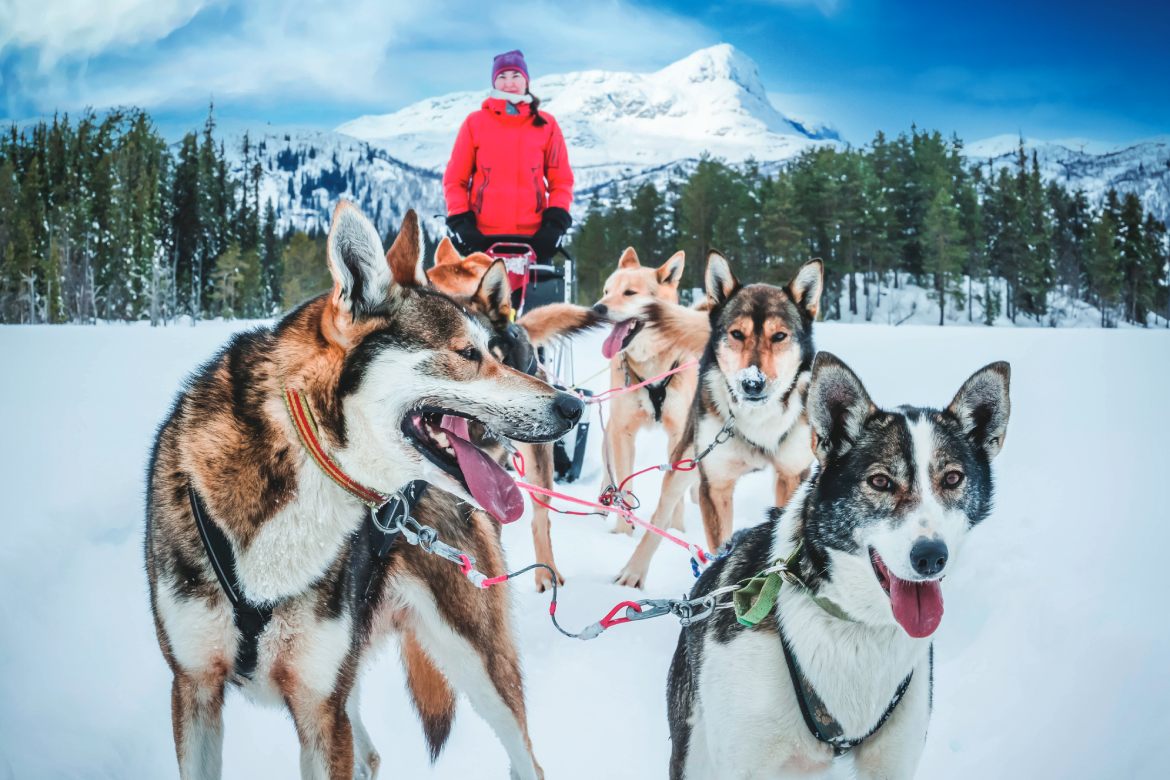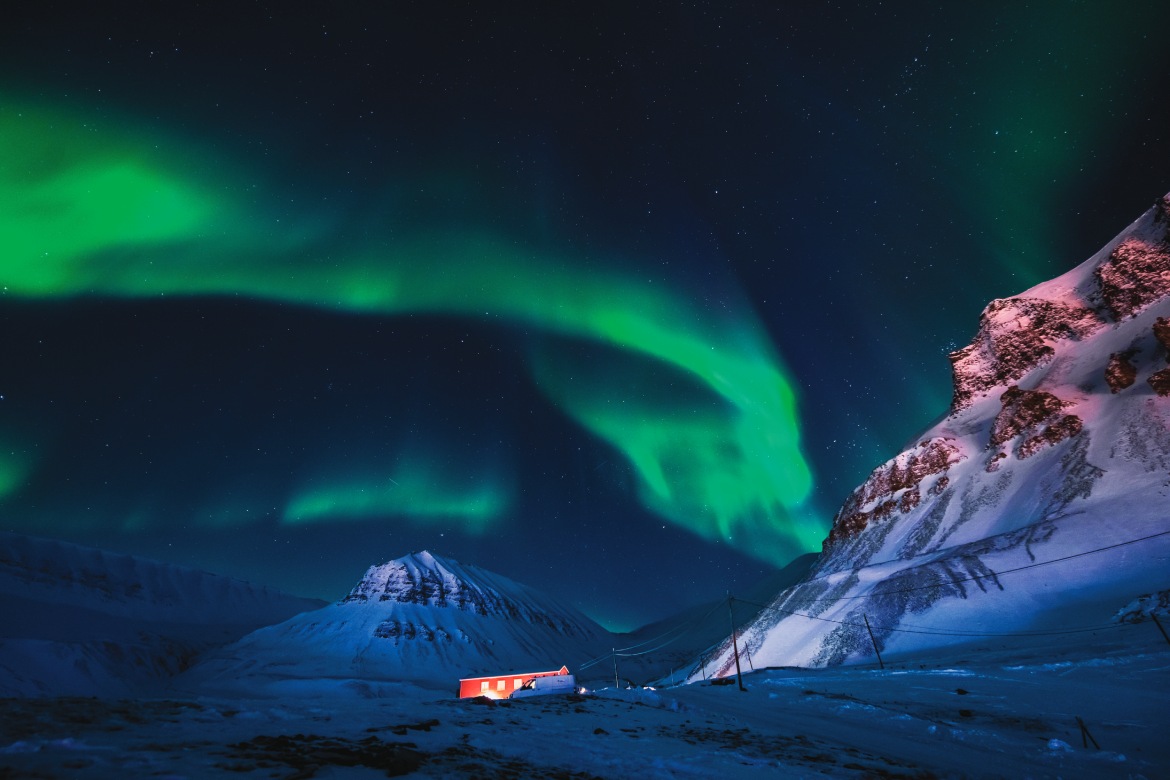Svalbard, Norway, is becoming something of a hot spot for adventurous travelers who want to experience brilliant green tundra and some uncommon wildlife.
It was like nearly every other yield sign I’ve seen in my life—a red and white triangle with bold text alerting drivers and pedestrians to be aware—only this sign bore a large image of a polar bear and a timeless warning scrawled in Norwegian: Gjelder hele Svalbard. “Applies all over Svalbard.”
Svalbard, Norway, an archipelago that sits halfway between the mainland and the North Pole, is becoming something of a hot spot for adventurous travelers who want to experience the brilliant green tundra, serrated aquamarine glaciers, and uncommon wildlife found high above the Arctic Circle. Home to minke whales, reindeer who frolic through town, and, yes, enormous white polar bears, it’s also home to a burgeoning food and beverage scene, making this far-flung locale ideal for outdoor lovers who appreciate feeling the brisk wind on their face, but who also want good food and comfy digs.
This northern cluster of islets was first discovered by Dutch explorer Willem Barentsz in 1596, and for centuries it was a hub for hunting, trapping, and, most notably, the international whaling industry. In recent years, it’s become the home of coal miners, researchers, and outdoor aficionados (think dog mushers, hikers, and backcountry skiers) in love with the high Arctic. The main island, Spitzbergen, and its friendly town of Longyearbyen carry that same adventurous spirit with them to this day. It’s one of those rare places travelers can go within the developed world and actually feel like they are charting a new course on untrammeled ground, a place that reminds us how oddly comforting something as simple as wilderness can be.

Dog Sledding in Norway (Photo by Henrik A. Jonsson)
My journey to Svalbard began onboard a stately Hurtigruten ship, cruising through the verdant, outstretched fingers of the Norwegian fjords. The brand, which just relaunched its iconic Svalbard Express itinerary, has long been a bastion for LGBTQ+ and women’s rights, sponsoring Amazing Race winners Will Jardell and James Wallington’s journey to the Galapagos and hiring Hedda Felin as CEO of Hurtigruten Norway. I was thrilled to be exploring the ends of the earth in such good company.
I arrived in Longyearbyen, the northernmost urban community on the planet, and hopped onto a bus for a quick tour through town to get my bearings, stopping to marvel at the famous Global Seed Vault, which safeguards over one million seed samples from nearly every country in the world. This project is designed to ensure the biodiversity of our future food supply, storing the seeds in a high-tech underground warehouse surrounded by rock and permafrost, in case of a catastrophic event that upends our climate or our supply chain. From there, we zipped through the small town, undulating snowy peaks, past the last remaining coal mine in Norway, and on to the infamous polar bear sign.
Though they might seem funny at first glance, warnings like this are bleakly posted all over Longyearbyen, and they are serious business. Citizens who venture outside of the designated polar bear safe zone are required by law to carry a gun and have an annually renewed certification proving that they know how to use it. This unusual danger lent a sense of risky excitement to nearly everything I did while exploring the island; cycling and sledding guides carried rifles, and schoolyard fences were stacked ten feet high, in the unlikely event of an attack.


